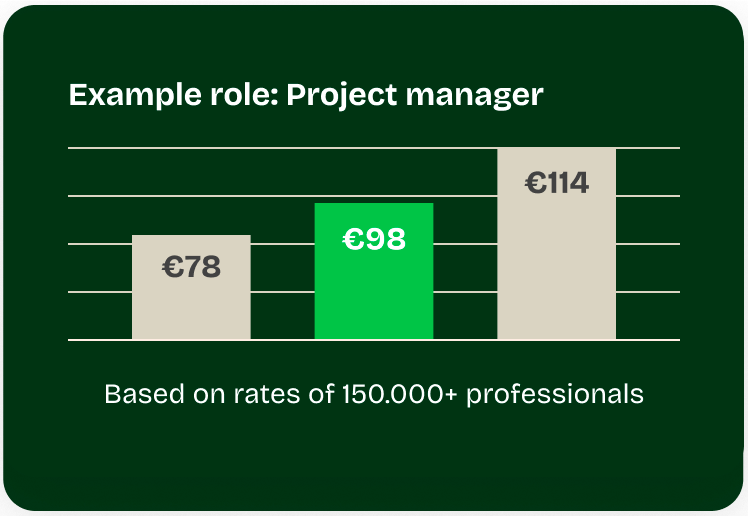6 Steps to Determine Your Freelance Hourly Rate
Determine your hourly rate by adding up your annual costs and desired income, dividing by your billable hours, and considering market benchmarks.
As a self-employed professional, determining your hourly rate can feel like a balancing act. You want to earn a sustainable income, cover your business expenses, and stay competitive in the market. Whether you're just starting out or already experienced, setting the right rate can be challenging.
This 6-step guide, complete with real-world examples and Striive’s free hourly rate benchmark tool, gives you the clarity and confidence to price your services professionally.
1. How Do You Calculate Your Hourly Rate as a Freelancer?
Quick answer: Add up your annual costs and desired income, then divide by your billable hours per year.
How it works: Start by listing your fixed expenses, business costs, insurance, and savings for things like retirement or training. Add your desired net income and a buffer for unexpected costs. Then divide the total by your realistic number of billable hours per year (typically between 1,000 and 1,500). Do not forget to include VAT in your calculation.
Example: If you need €70,000 annually and expect to bill 1,200 hours, your base rate is €58.35.
2. What’s the Difference Between Freelance, ZZP, and Interim Rates?
Quick answer: All are self-employed, but the terms reflect different types of work. “ZZP” is the umbrella term; “freelance” is often project-based; “interim” roles are longer-term and outcome-driven, often with higher responsibility, and higher rates.
Why it matters: Freelancers typically juggle multiple short-term projects. Interim professionals are hired for several months to a year to deliver specific results. Understanding these distinctions helps you position your rate appropriately.
3. How Do You Compare Your Rate to the Market?
Quick answer: Use the Striive Hourly Rate Benchmark Tool to see what professionals in your field and region typically charge.
How it works: Enter your job title to access real-time market data based on actual assignments. Use this as a reference to validate or adjust your rate.
Example: If the benchmark for your role is €85 and you’re charging €75, consider raising your rate, especially if you can back it up with experience and results.

4. How Do You Communicate Your Rate Professionally?
Always be clear and consistent in proposals and conversations. Avoid vague ranges, state a specific rate or offer service packages. Clearly outline what’s included (e.g., travel time, materials) to avoid misunderstandings and project professionalism.
Pro tip: Use a “starting from” rate in your profile to attract interest without locking yourself into a fixed price.
5. How Do You Negotiate Your Freelance Rate?
Come prepared with a rate that’s above your minimum threshold. Use market data and past successes to justify your price. Instead of offering discounts, suggest alternatives like a reduced scope or fewer hours. This protects your value while showing flexibility.
Always confirm agreements in writing.
6. How Often Should You Review Your Rate as a Freelancer?
Quick answer: At least once a year, or whenever your costs, demand, or experience change significantly.
How it works: Schedule a regular rate review. Recalculate your base rate and compare it to market trends. Factor in inflation, new skills, and shifts in demand. Regular updates ensure you stay competitive and don’t miss out on income.
Final Thoughts
Your hourly rate is a strategic decision, one that should be backed by solid calculations, market insights, and a professional presentation. By understanding the differences between freelance, ZZP, and interim roles, you can better position your services.
Use the Striive Hourly Rate Benchmark Tool to get data-driven insights and inspiration. And don’t forget to showcase your profile on the Striive assignments page to find projects that match your rate and expertise.